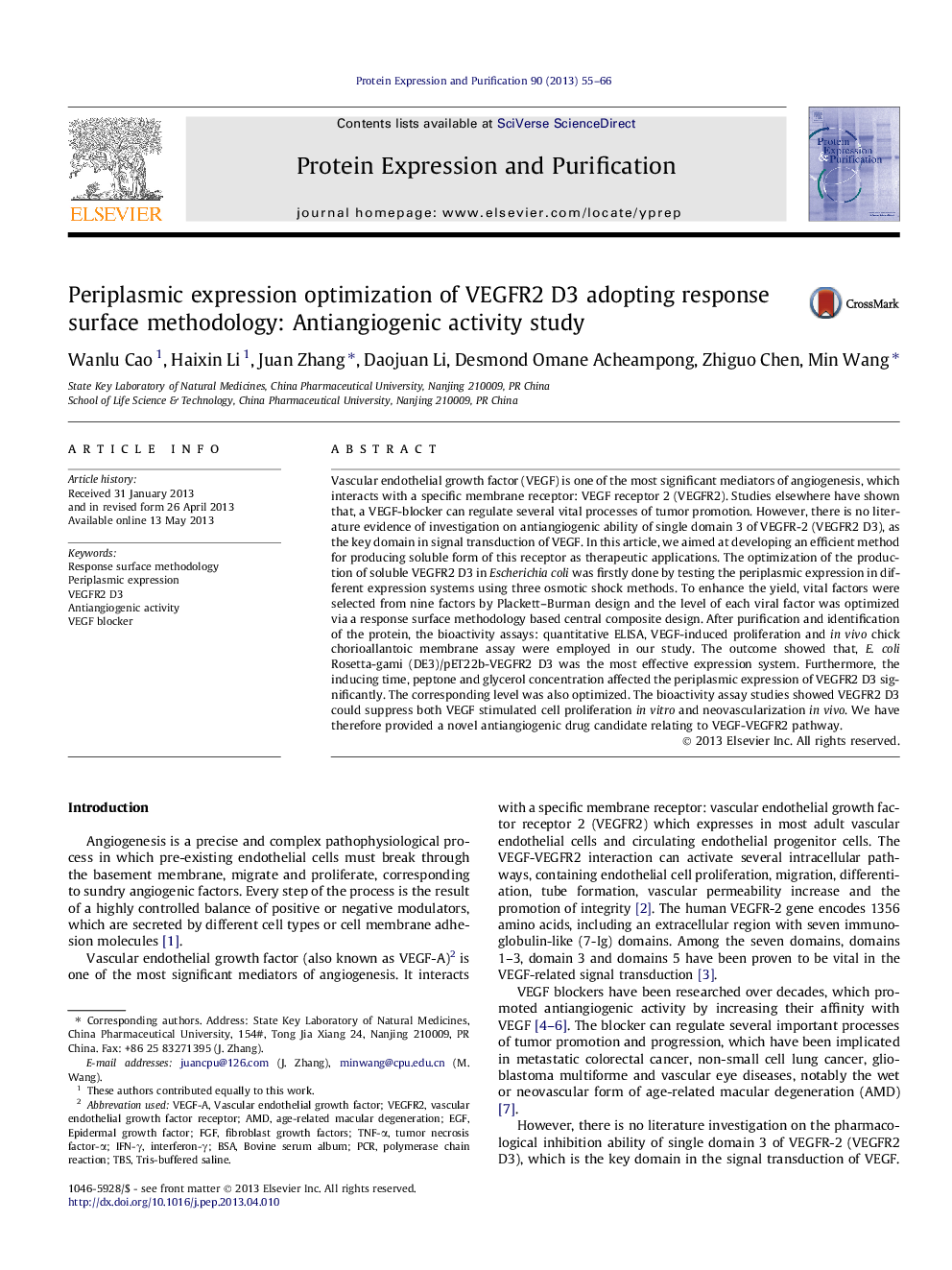| Article ID | Journal | Published Year | Pages | File Type |
|---|---|---|---|---|
| 8360742 | Protein Expression and Purification | 2013 | 12 Pages |
Abstract
Vascular endothelial growth factor (VEGF) is one of the most significant mediators of angiogenesis, which interacts with a specific membrane receptor: VEGF receptor 2 (VEGFR2). Studies elsewhere have shown that, a VEGF-blocker can regulate several vital processes of tumor promotion. However, there is no literature evidence of investigation on antiangiogenic ability of single domain 3 of VEGFR-2 (VEGFR2 D3), as the key domain in signal transduction of VEGF. In this article, we aimed at developing an efficient method for producing soluble form of this receptor as therapeutic applications. The optimization of the production of soluble VEGFR2 D3 in Escherichia coli was firstly done by testing the periplasmic expression in different expression systems using three osmotic shock methods. To enhance the yield, vital factors were selected from nine factors by Plackett-Burman design and the level of each viral factor was optimized via a response surface methodology based central composite design. After purification and identification of the protein, the bioactivity assays: quantitative ELISA, VEGF-induced proliferation and in vivo chick chorioallantoic membrane assay were employed in our study. The outcome showed that, E. coli Rosetta-gami (DE3)/pET22b-VEGFR2 D3 was the most effective expression system. Furthermore, the inducing time, peptone and glycerol concentration affected the periplasmic expression of VEGFR2 D3 significantly. The corresponding level was also optimized. The bioactivity assay studies showed VEGFR2 D3 could suppress both VEGF stimulated cell proliferation in vitro and neovascularization in vivo. We have therefore provided a novel antiangiogenic drug candidate relating to VEGF-VEGFR2 pathway.
Related Topics
Life Sciences
Biochemistry, Genetics and Molecular Biology
Biochemistry
Authors
Wanlu Cao, Haixin Li, Juan Zhang, Daojuan Li, Desmond Omane Acheampong, Zhiguo Chen, Min Wang,
